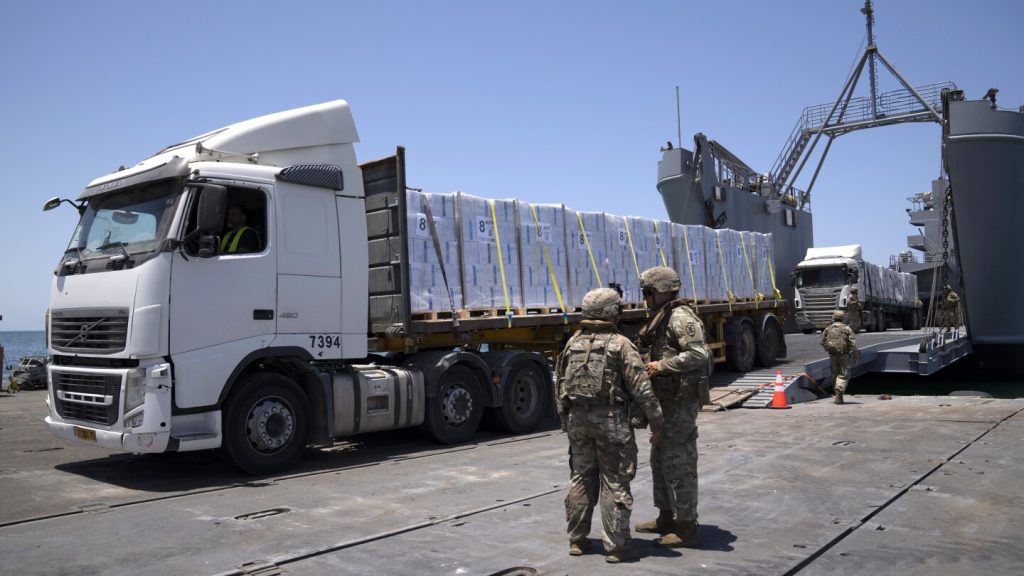U.S. Army soldiers in the 7th Transportation Brigade faced their most challenging mission yet as they worked on the Gaza humanitarian aid project. The Joint Logistics Over-the-Shore system, or JLOTS, was set up to deliver much-needed food and supplies to Palestinians in Gaza during the Israel-Hamas war. The mission was filled with turbulent weather, security threats, and personnel restrictions, making it a complex organizational leadership challenge for the soldiers involved.
After the completion of the project, Col. Sam Miller, who led the unit during the mission, reflected on the lessons learned. The Army is now reviewing the $230 million pier operation and the experiences gained from the project. A senior Army official mentioned the need for the unit to train under more challenging conditions to better prepare for similar situations in the future. The official also highlighted that assessments of the pier project have not yet been publicly released.
A report from the inspector general for the U.S. Agency for International Development revealed concerns from USAID staffers about the construction of the pier undermining efforts to open more efficient land crossings for aid delivery to Gaza. Despite these concerns, the Defense Department stated that the pier achieved its goal of providing high volumes of humanitarian aid to the people of Gaza during an acute humanitarian crisis. However, the project fell short of the initial target to feed 1.5 million people for 90 days, only managing to provide enough food for approximately 450,000 people for a month.
The Gaza pier mission presented unique challenges for the Army soldiers, as they were unable to step ashore due to Biden’s requirements. Instead, they operated across a floating city of more than 20 ships and platforms offshore, managing logistics for delivering supplies, medical care, and communications under complex sea conditions. Soldiers had to plan several days ahead to ensure they had everything they needed for the 30-nautical-mile trip from the pier to Israel’s port of Ashdod, in addition to sailing around 5 miles offshore to maintain a safe distance from Gaza City.
Communication difficulties and unexpected logistical challenges arose during the Gaza pier operation, including the negotiation of contracts with civilian workers for tasks troops could not perform and the coordination of aid distribution from Cyprus to Gaza. The soldiers had to navigate slow systems, limited bandwidth, and the need for classified communications while keeping track of numerous personnel and aid movements. When adverse weather conditions damaged the pier, additional challenges arose in repairing and relocating the sections to Ashdod.
Despite the difficulties faced during the Gaza humanitarian aid project, military leaders and soldiers gained valuable training and experience. Lessons learned from the mission, including the importance of preparing for challenging conditions, will inform future operations. The Army official also noted that the unique circumstances of the Gaza mission may not apply to all pier operations, such as military assaults or disaster responses, but the experience gained will enhance readiness for similar situations in the future. Ultimately, the soldiers involved in the mission will be better prepared to handle complex logistical missions in challenging environments.


